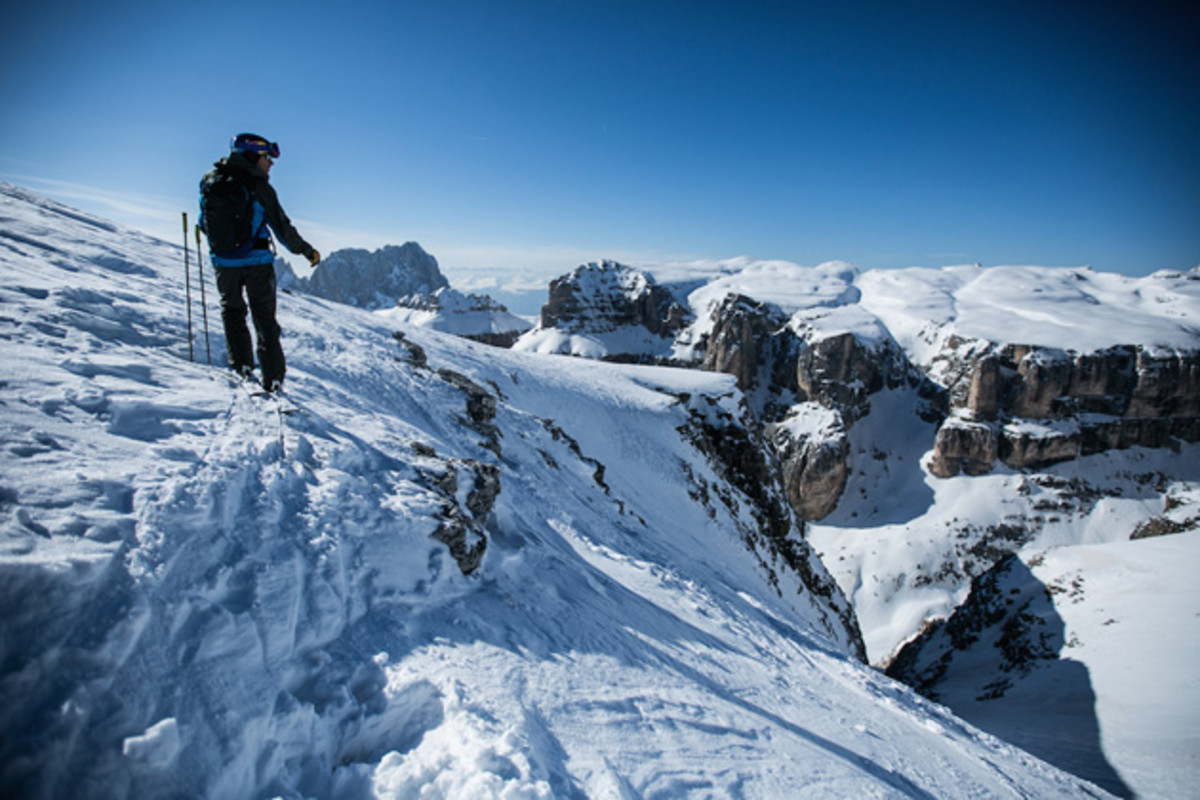Chris Davenport and the high-tech Kastle ski design process

Sometimes, the design of a great pair of skis begins with a conversation. Chris Davenport should know.
“Dav,” as he’s known in the ski world, is one of the most accomplished big-mountain skiers ever to hit the slopes. His decades of riding every imaginable type of snow condition has given him invaluable insight into his gear, which led him to jump at the opportunity to help restart Kastle, an 84-year-old Austrian ski brand, about eight years ago, lending his expertise to the design of the high-end ski line, one of which bears his signature.
Now one of the company’s owners, the 43-year-old Davenport plays a key role in ski design and development. As for the creation, he leaves that to skilled Austrian fabricators. “We have guys laying up and producing skis who are from generations of ski builders,” Davenport tells Edge. “They are craftsman and artisans.”
How PrimaLoft created a goose-synthetic down hybrid material
a “broad perspective on what works in different conditions.”
That perspective has helped create the Chris Davenport signature collection, the Kastle FX Freeride skis, a high-performance, all-mountain offering.
With design always three years out—Davenport says he’s currently working on 2017 products, whether visual updates or complete technological or material changes—engineers in Austria work with Davenport to start the process.

“You start with a conversation, then on paper with a design brief,” he says. “You are looking at materials, sourcing materials, looking at costs. It is really fun and challenging. It is quite difficult to produce a ski that will take the industry by storm. We just make a high-end product hand-crafted with Austrian heritage.”
Early on, Davenport’s on-mountain experience changed the design of the FX. The ski started with hollow technology on the tips, using the milled-out design to produce light, rounded tails. “Even though we had reduced weight, we were losing performance in the ski,” Davenport says. “After that first two-year cycle, we redesigned the tail of the ski based on my experience on hard snow, moguls and frozen spring snow to go back to a square race tail.” The snappy, strong, grippy tail gives the skier more confidence.
The tweaks that Dav brought to the FX line as well as to all seven lines across the Kastle collection, all focus on high-end materials and generations of ski-crafting know-how.
Making your eyes—and brain—happy with long-wave blue light lenses
steel alloy, a stiff metal that also flexes, one of the most technologically-advanced materials in skis that helps dampen vibration.
In the building process, each mold starts with graphite and impregnated glass fiber. Kastle then adds a .4 millimeter layer of titanal, an ash and silver-fir wood core, a second layer of titanal, rubber sidewall and then the final layer of impregnated fiberglass.
Davenport says the milling of the laminated wood cores happens on a three-dimensional milling machine to get the cores within a 10th of a millimeter tolerance every time for consistency across all skis.
“The milling process is really amazing and precise,” he says. From there, hand-finishing every one of the 18,000 skis produced annually requires a craftsman to run the ski through a stone grinder to put the finish on the base, a hand machine to put the angle of the base on the ski, and finally hand-polishing of the top sheet. All this is done in a controlled factory environment without humidity and with temperature stability to ensure that the epoxy and glue receive the proper pressures.
With all the work done by designers, engineers and artisans complete, Davenport likes where his latest ski conversations have taken him.
Tim Newcomb covers stadiums, design and gear for Sports Illustrated. Follow him on Twitter at @tdnewcomb.
